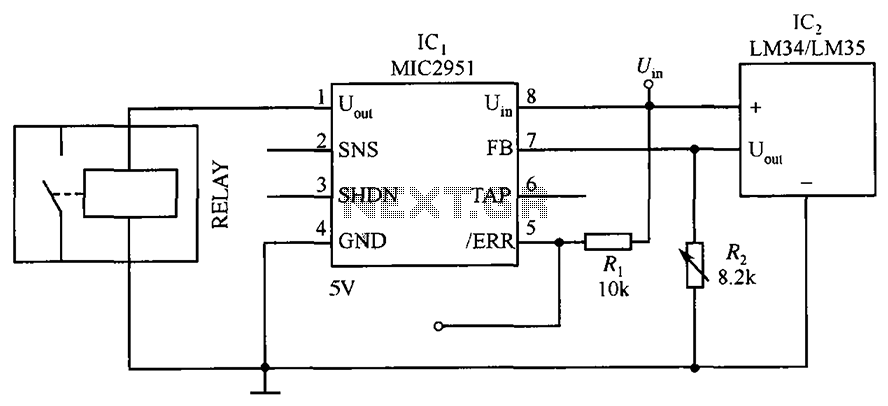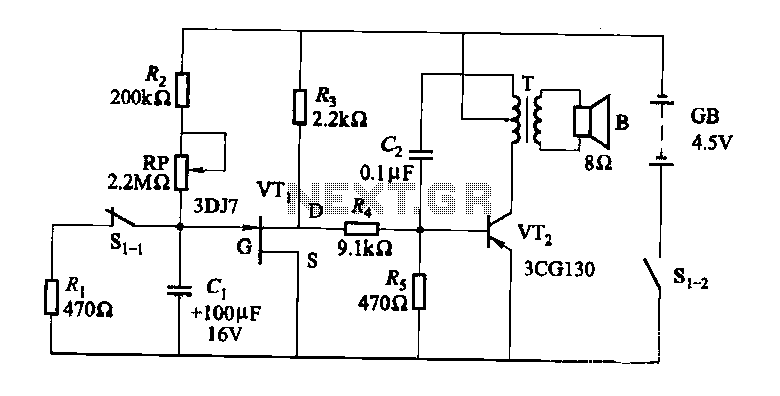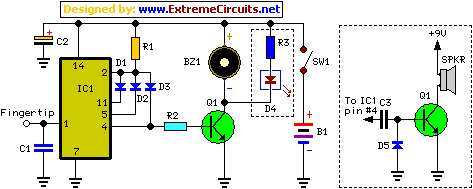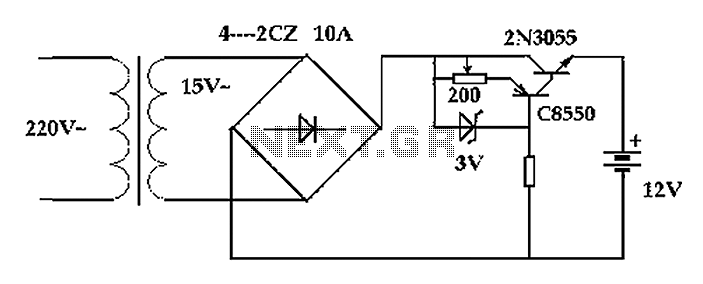
Overheat protection system consisting of circuit diagram MIC2951

The circuit depicted in the figure utilizes a thermal protection system featuring the MIC2951 component. The temperature threshold can be adjusted by modifying resistor R2.
The thermal protection circuit employing the MIC2951 is designed to monitor and regulate temperature within a specified range. The MIC2951 is a low-dropout voltage regulator that can be configured to provide a stable output voltage while also incorporating thermal protection features.
In this circuit, the key component is the MIC2951, which operates by comparing the output voltage to a reference voltage. When the temperature exceeds the set threshold, determined by the value of resistor R2, the circuit activates a protective mechanism. This can involve cutting off power to the load or triggering an alarm system to indicate an over-temperature condition.
The adjustment of R2 allows for flexibility in setting the desired temperature threshold. By changing the resistance value, the temperature at which the circuit activates can be fine-tuned to suit specific applications. This feature is particularly useful in environments where temperature fluctuations may occur, ensuring that sensitive electronic components are safeguarded against overheating.
Additional components that may be included in the schematic could consist of capacitors for stability, diodes for reverse polarity protection, and transistors for switching applications. The layout of the circuit should ensure minimal interference and optimal thermal management to enhance the performance of the MIC2951 and improve the overall reliability of the thermal protection system. Circuit shown in Figure is the use of thermal protection system consisting of circuit MIC2951. The circuit is set by adjusting the temperature threshold R2.
The thermal protection circuit employing the MIC2951 is designed to monitor and regulate temperature within a specified range. The MIC2951 is a low-dropout voltage regulator that can be configured to provide a stable output voltage while also incorporating thermal protection features.
In this circuit, the key component is the MIC2951, which operates by comparing the output voltage to a reference voltage. When the temperature exceeds the set threshold, determined by the value of resistor R2, the circuit activates a protective mechanism. This can involve cutting off power to the load or triggering an alarm system to indicate an over-temperature condition.
The adjustment of R2 allows for flexibility in setting the desired temperature threshold. By changing the resistance value, the temperature at which the circuit activates can be fine-tuned to suit specific applications. This feature is particularly useful in environments where temperature fluctuations may occur, ensuring that sensitive electronic components are safeguarded against overheating.
Additional components that may be included in the schematic could consist of capacitors for stability, diodes for reverse polarity protection, and transistors for switching applications. The layout of the circuit should ensure minimal interference and optimal thermal management to enhance the performance of the MIC2951 and improve the overall reliability of the thermal protection system. Circuit shown in Figure is the use of thermal protection system consisting of circuit MIC2951. The circuit is set by adjusting the temperature threshold R2.





